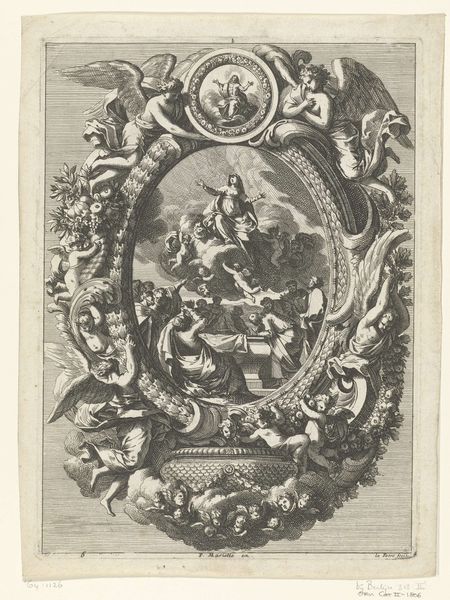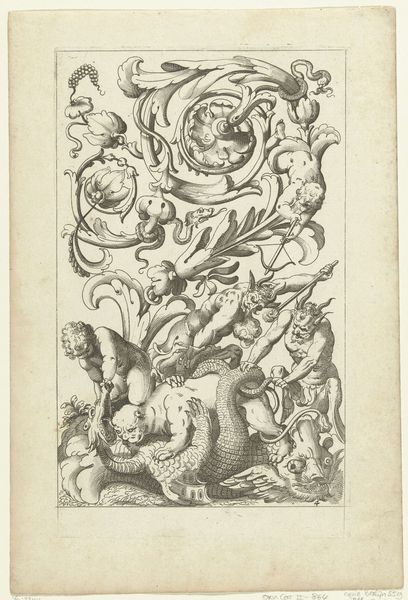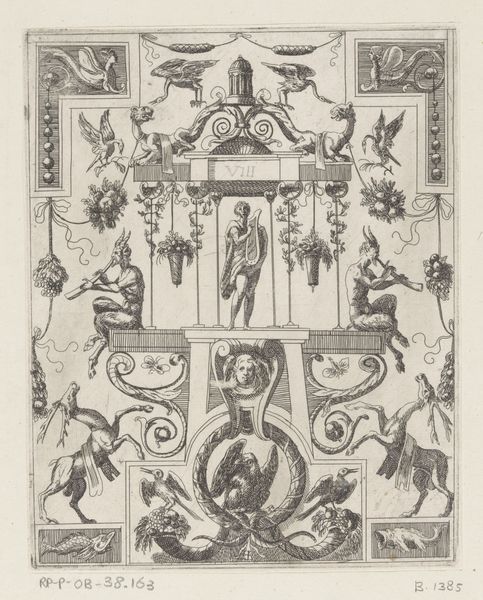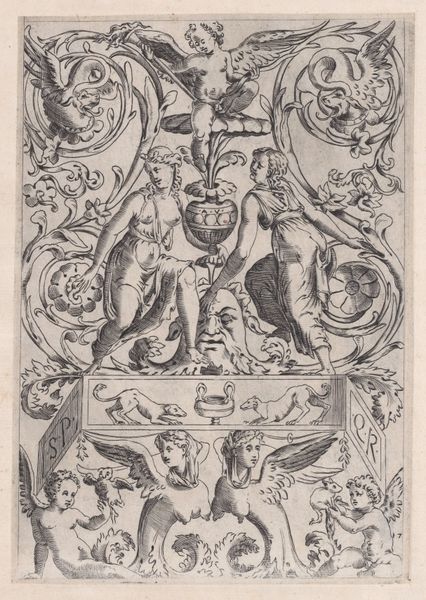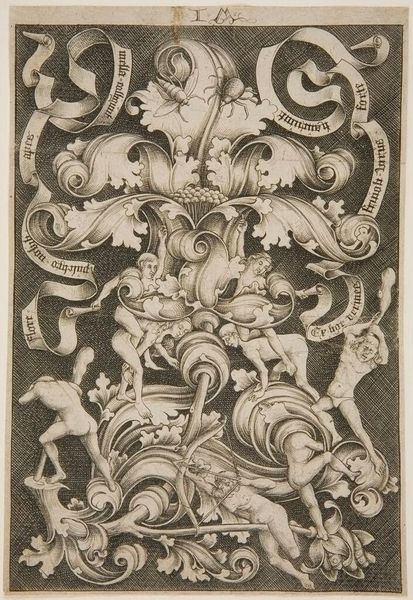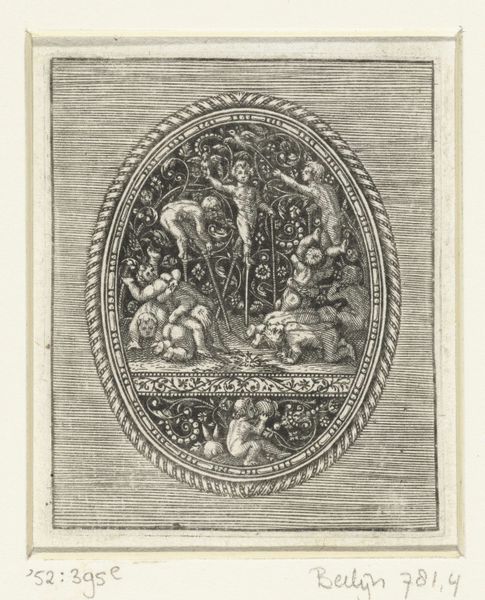
print, engraving
#
ink drawing
#
allegory
#
pen drawing
# print
#
pen illustration
#
pen sketch
#
figuration
#
11_renaissance
#
pen-ink sketch
#
pen work
#
italian-renaissance
#
engraving
Dimensions: height 136 mm, width 116 mm
Copyright: Rijks Museum: Open Domain
Curator: What catches my eye first is this fantastical, almost theatrical feeling! It's like peering into a dream, doesn't it strike you that way? Editor: Absolutely! This engraving, "Venus en Amor" by Marcantonio Raimondi, probably executed sometime between 1490 and 1562, pulls you in with its complex symbolism and lively composition. Currently, this print lives here at the Rijksmuseum. Curator: Ah, Raimondi! He had such a gift for breathing life into these mythological scenes. You feel the weight of the figures, the playful yet assertive cherubs. What is intriguing here is a miniature temple lifted on their back. Editor: Precisely. What we see, is a print culture which gained in importance, especially during this Italian Renaissance. Disseminating imagery through prints became a central way that knowledge of classical themes and visual ideas circulated among larger audiences. Curator: See how those swirling floral patterns both confine and liberate the characters? This really amplifies the sensation that Venus is contained within a perfect little love temple, carried around by divine putti and hybrid sea creatures. Editor: These details speak to the popularity of allegory. Every element, the dolphins, the cupids, even the acanthus leaves, are signifiers, communicating ideas about love, beauty, and virtue that were central to the Renaissance worldview. This idealized, ornamental representation is indeed also connected to powerful courtly milieus, seeking inspiration from Antiquity to reinforce their own claims to power and authority. Curator: You almost feel sorry for Venus there, though, don't you? So carefully, so beautifully trapped inside that little structure. Love idealized can often turn into love restricted. Editor: That's a powerful reading. And this piece prompts all kinds of questions. How accessible, or indeed, how easily “read” would all that symbolism have been back then? It reminds us how interpretations inevitably evolve. Curator: I think I’ll revisit that. A work of art isn’t just an image, it is also an encounter through which my perception of love takes place. It keeps moving!
Comments
No comments
Be the first to comment and join the conversation on the ultimate creative platform.




